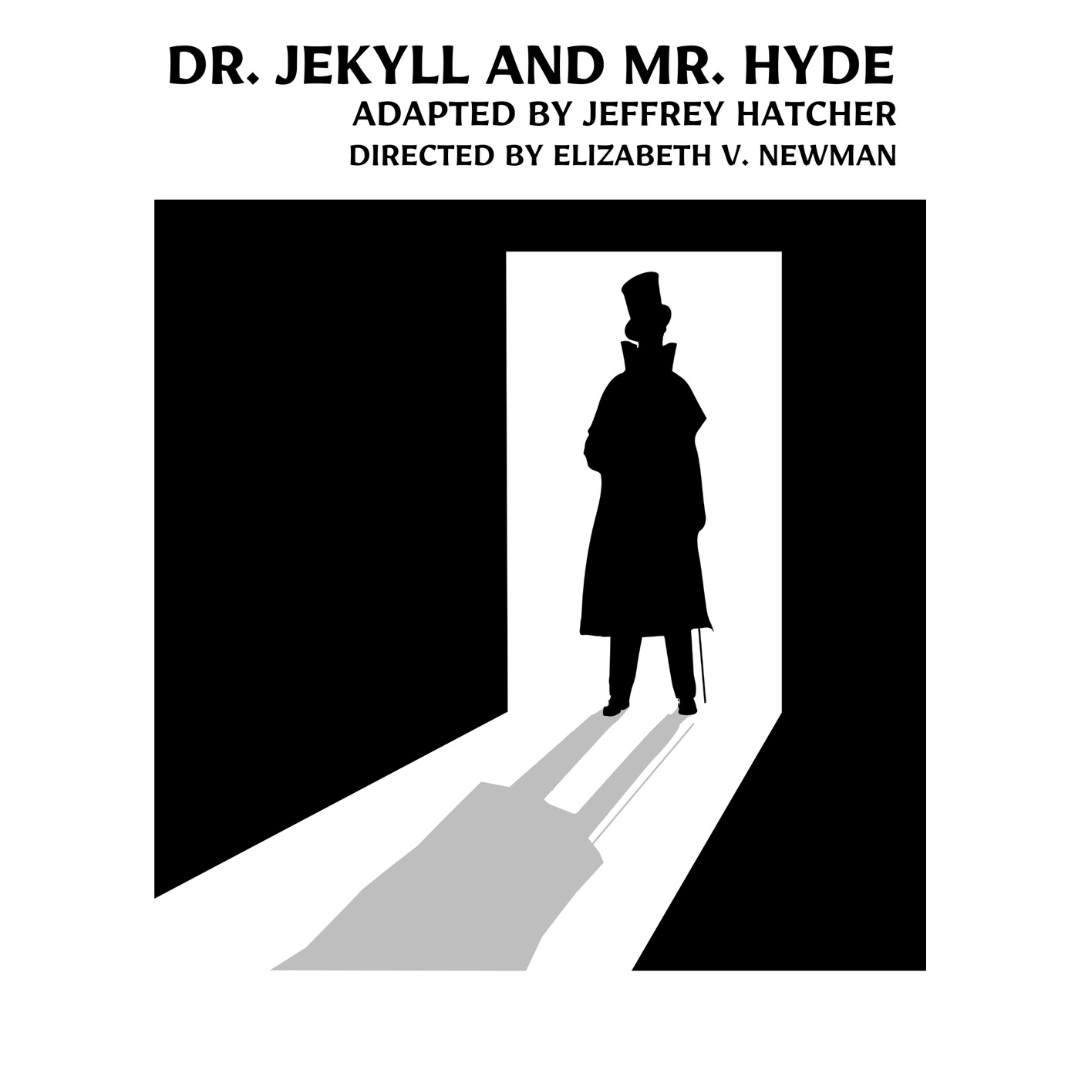Review: Dr. Jekyll and Mr. Hyde (Jeffrey Hatcher's adaptation), by Filigree Theatre
by David Glen Robinson
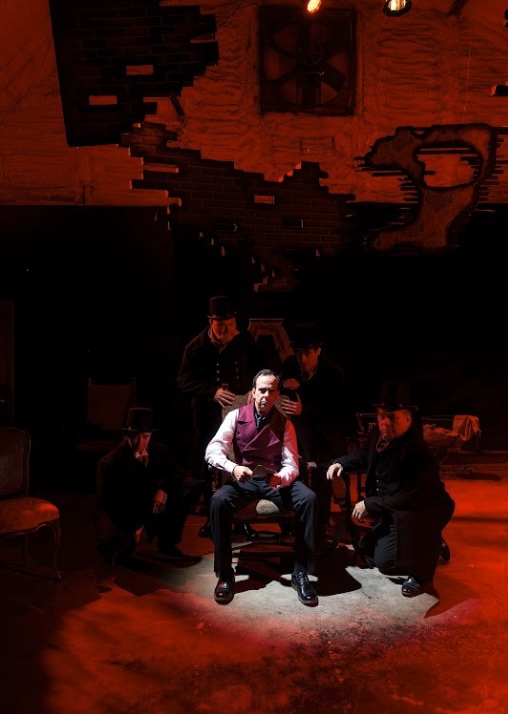 “From tongue to tail,” the key line in Filigree Theatre’s new production of Jeffrey Hatcher’s adaptation of Jekyll and Hyde, is the acute metaphoric descriptor of the language art and sensual themes of this exquisite stage production.
“From tongue to tail,” the key line in Filigree Theatre’s new production of Jeffrey Hatcher’s adaptation of Jekyll and Hyde, is the acute metaphoric descriptor of the language art and sensual themes of this exquisite stage production.
Role reversal and its twin, plot twist, reside in the very premise of Stevenson’s story and Hatcher’s stage version. It's a tale of doppelgangers meeting and splitting the atom upon stepping through the looking glass and shaking hands. Matter collides with antimatter, and explosive effects are still propagating throughout the human universe. In brief, Jeffrey Hatcher’s adaptation tells the familiar horror story of a practicing doctor who could change his entire life by drinking his experimental potion. The blend of researched tinctures and concoctions redirects his mind. Unfortunately, Mr. Hyde, the alter ego evoked in this way, is a rapacious monster of monumental proportions. We're taken on a wild ride to the end of the tale. Fortunately, producer/director Elizabeth V. Newman and the Filigree Theatre cast and crew are deft and sure guides as we hurtle through it all.
Sensuality, especially of the pressure-cooker, repressed variety, and sexual ultraviolence appear to our eyes as a logical dyad, but it was the Victorians who placed them on the human map. Hyde's descriptions of sex-tinged violence and just plain murder bring to mind Jack the Ripper’s predations in Victorian London. Similarly, widely read but secretively distributed stories of great obscenity became notorious in late Victorian times. Was author Stevenson alluding to those in his novella? A timewise Wikipedia-style analysis of the story would seem to say no, but attention: there is nuance.
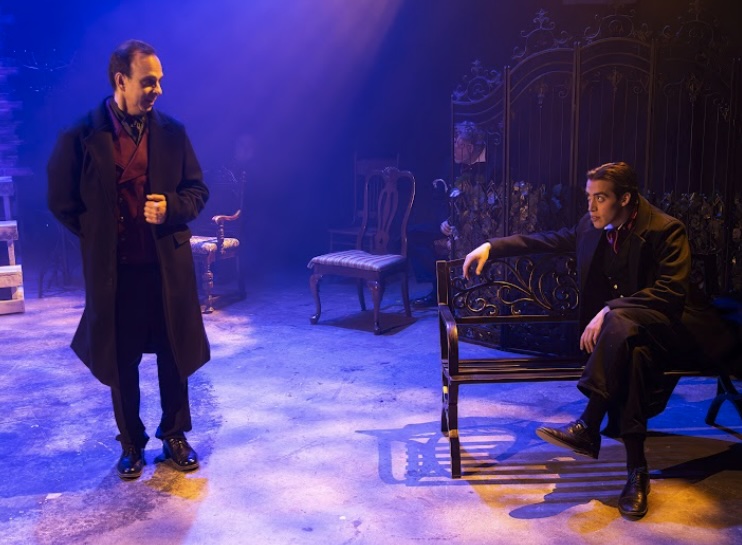
Contributions to The Pearl, a serial publication of Victorian pornography, were uncredited, but William Lazenby's periodical was openly distributed on London’s streets from 1879 to 1880. The authorities shut it down for obscenity but it may have gone underground. Stevenson wrote his Strange Case of Dr Jekyll and Mr Hyde in 1886. It was widely read. Jack the Ripper leaps out in our imaginations of the early 1880s, terrorizing London’s street-walking prostitutes in 1888, possibly with a few crimes in 1889—a short time to us but certaintly a long one for those living through it. So if it reads and views as if Hyde may have had Jack for a real-life model, the opposite may be the case. The Ripper may have been imitating the fictional doctor's alter ego.
A note: Stevenson's Strange Case of Dr Jekyll and Mr Hyde is anything but pornographic. Its allusive abuses were masked for the Victorian prudery required at the time. That's why the key phrase from tongue to tale with its reference to the flesh was such a scandalous utterance in public.
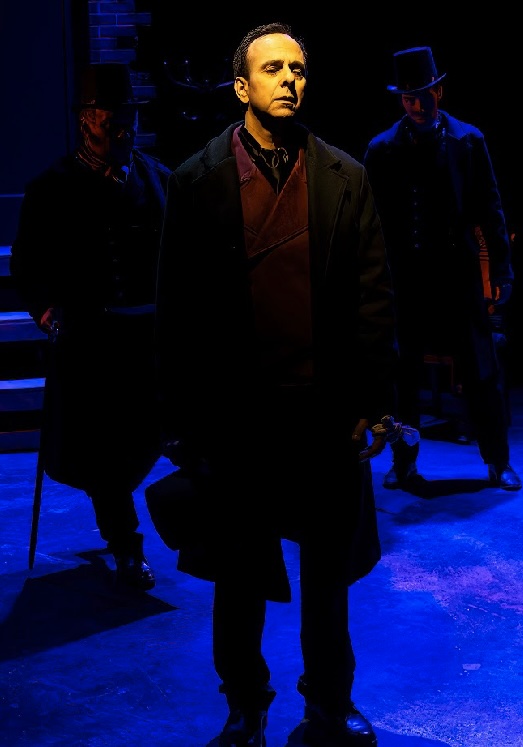 One of Elizabeth V. Newman's greatest skills is casting, as demonstrated in this gem. She must look deeply into auditioning actors and detect qualities and traits apt for characters in plays Filigree Theatre hasn't yet produced. Newman's keen perception explains partially why actors reappear across her productions. All her casts, including this one, are chameleonic, capable of performing multiple characters, a welcome boon in our era of small casts performing in the intimate spaces in thrust or round with no proscenium curtain and essentially no backstage areas. Her Jekyll and Hyde cast is excellent throughout. Her band name might be Elizabeth and the Chameleons.
One of Elizabeth V. Newman's greatest skills is casting, as demonstrated in this gem. She must look deeply into auditioning actors and detect qualities and traits apt for characters in plays Filigree Theatre hasn't yet produced. Newman's keen perception explains partially why actors reappear across her productions. All her casts, including this one, are chameleonic, capable of performing multiple characters, a welcome boon in our era of small casts performing in the intimate spaces in thrust or round with no proscenium curtain and essentially no backstage areas. Her Jekyll and Hyde cast is excellent throughout. Her band name might be Elizabeth and the Chameleons.
Jeffrey Hatcher's 2008 adaptation joins a host of versions for stage, television, radio, film, and even video games (more than 123 filmed versions! - vide Wikipedia). His innovation was to split the malevolent Hyde and share him out sequentially among participants in a small-cast version. Non-titular roles are dealt out among the cast, who play both Hyde and all the lesser characters.
Scot Friedman, one of Austin's most versatile character actors, plays the troubled doctor; Bailey Ellis as Solicitor Gabriel Utterson, the investigator Stephenson imagined for his original Strange Case, serves as Dr. Jekyll's intellectual foil. Their duologues provided an accessible and perceptive exploration of the doctor's mind. Utterson noted that brain and mind were separate; doctors such as Jekyll knew everything about the brain and its structure, but what of the mind and its contents? Dr. Jekyll averred that this was the direction of his research.
Ellis transformed himself into Hyde, as did the other actors. They changed characters adroitly, altering dialect and accent as well as donning and doffing the stylish Victorian top hats of the time (credit to Maddy Lamb for costume design).
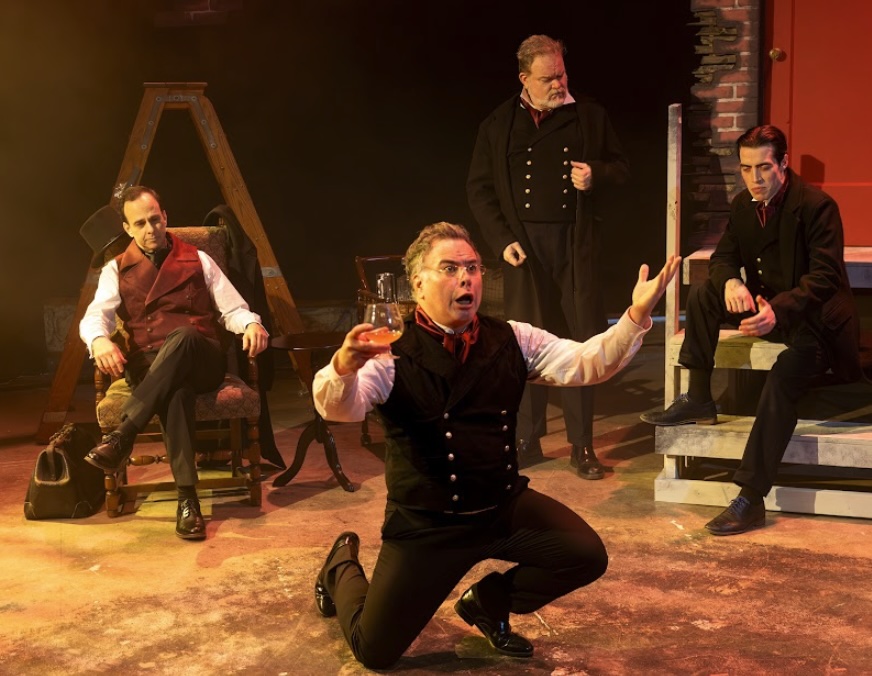
Mike Ooi with his malicious glares at Friedman's Dr. Jekyll heightened the atmosphere of hostility and evil around the composite character. Those glittering eyes created peaks in the drama of the show.
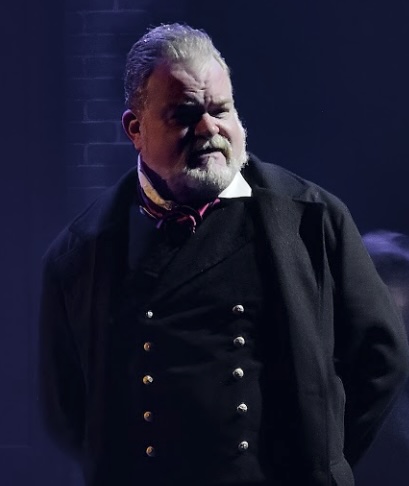 Beau Paul is the king of multiple characters—six of them in Dr. Jekyll and Mr. Hyde by my inexact count. Each of his stage personae was precise down to every intonation; his stage presence was towering, as always. Molly McKee was not far behind in the character count (four, I think), and her vicious Hyde is the one I’d least like to meet in a London alley.
Beau Paul is the king of multiple characters—six of them in Dr. Jekyll and Mr. Hyde by my inexact count. Each of his stage personae was precise down to every intonation; his stage presence was towering, as always. Molly McKee was not far behind in the character count (four, I think), and her vicious Hyde is the one I’d least like to meet in a London alley.
The patchwork set design exploded sections of faux brickwork and Victorian wallpaper patterns upward nearly to the vault of the Quonset arch inside Factory on Fifth. An elevated door at the top of high steps flanked by more brickwork created a brooding, mysterious, intimidating look of unsettling foreboding. That and a fencelike screen house right established all the exterior scenes. Interiors were created by focal lighting and a few stage props, including Victorian-style desks and chairs.
Patrick Anthony's lighting design illuminated every prop and scene and gave near-infinite variety to foggy London. Spectacular lighting sets of blue and gold transitioned to red and black (Hyde’s theme colors). And all the hues and values in between amounted to pickles to the imagination, allowing the audience to envision arch horrors in the crevices and corners of the streets of the empire, horrors unmentioned in the dialogues but unleashed in the minds of the attendees. Once again, kudos to Anthony and his merry band of screw-gunners, scenic artists, and lighting ops.
The core question is that of dualism, good vs. evil. It was apparent from the outset that Hyde is a refraction of Dr. Jekyll. That's the premise of the story. The dualism emerges with events, and all the characters struggle with it. Sensuality, pain, murder, and debauchery are incidental to the fundamental struggle. The nature and question of good vs. evil haunts Western philosophy but is also addressed in Eastern philosophy. The yin-yang symbol with its two dynamically turning or spinning forms eternally trading places with each other, speaks to the quality of interchange. Note, too, that a tiny circle of the opposite is preexistent in both yin and yang, without need of change. The graphic communication there is superb, and the meaning of one-within-the-other is magnified in Dr. Jekyll and Mr. Hyde.
In this play of extremes, however, the forces are out of balance: koyaanisqatsi. After all, the climax and ending are predicated on this point.
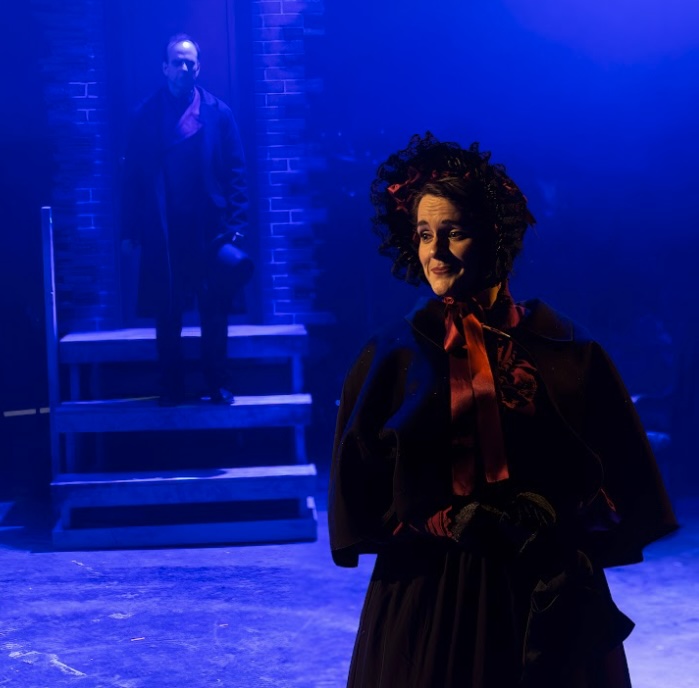
Jekyll could not resolve the opposites within his mind and character with his tinctures and compounds. It was the character Elizabeth, played with grace by Arielle LaGuette, who recognized openly and within herself that she was at the same time a humble nurturing maid servant and a rampaging street whore, who twice heard that dualistic phrase “from tongue to tail.” That allowed her to make the extraordinary connection between two vastly opposite men and react courageously. It was thesis-antithesis-synthesis, but the synthesis elevated danger to tragic levels. Jekyll’s and Hyde’s characters were thus revealed, matched, and opposed in complementary fashion. Dr. Jekyll, who in mercy and upper-class privilege could not locate the soul anywhere in the human being, or so he declaimed without lament, is contrasted with Mr. Hyde, who found love in the morass of his evil.
Go see Filigree Theatre’s Dr. Jekyll and Mr. Hyde or your FOMO will catch on fire.
The play is open now at Factory on Fifth, the Quonset hut theatre at 3409 E. Fifth St. in east Austin. It runs from February 7 to 23, 2025. The show is the second offering in Filigree’s seventh season >Masks and Mirrors, and oh, how appropriate a selection this show is for this season.
Dr. Jekyll and Mr. Hyde (Hatcher)
by Adapted by Jeffrey Hatcher
Filigree Theatre
February 07 - February 23, 2025
February 7 - 23, 2025
Factory on Fifth, Austin
Thursdays - Saturdays at 8 p.m., Sundays at 3 p.m. and 8 p.m.
Tickets $27.68 or $43.67 (including fees), available HERE
(Offer 11/15/2024):

